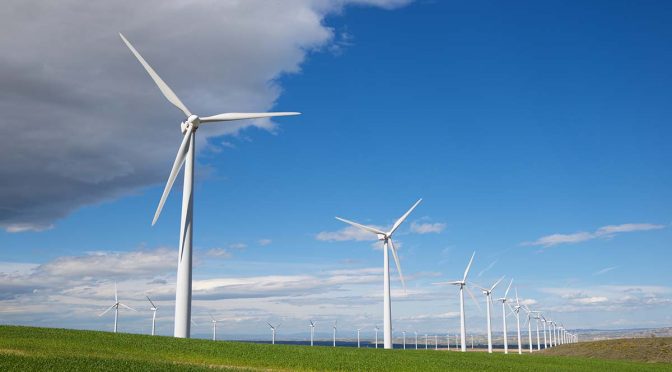Spain is the second European country that generated the most electricity in 2021 from wind power and solar (which includes photovoltaic and concentrated solar power), only behind Germany according to data from ENTSO-E. The sun and the wind produced more than 86 GWh in Spain last year, a third of all production at the national level. This follows from the Renewable Energies Report, a publication that Red Eléctrica presents today for the sixth consecutive year and which includes the behavior of these technologies in our country.
“These data demonstrate the great potential of Spain in renewables, a privileged position that allows us to continue promoting a more sustainable electricity system and contribute to the autonomy and energy security of Europe,” says Beatriz Corredor, president of Redeia, parent company of Red Eléctrica.
For the first time, this report is published in digital format through a site designed to offer a more accessible and interactive browsing experience. Now, users can quickly and easily browse, interact and download data by selecting the technology of interest and the desired magnitude (power, generation). They can also learn about international comparisons in each of the selected energies.
In this edition, the report shows that Spain is firmly advancing in the process of ecological transformation, consolidating its leadership in renewable energies in 2021. These sources generated almost 47%, a historical maximum that has been possible thanks to the increase in the production of electricity from wind and solar photovoltaic. Both sources broke records: wind energy was the leader of the mix, with more than 23% and an increase in its generation by 10%; For its part, photovoltaic grew by 37% and reached 8% of the generation structure.
Weather conditions and the increase in installed renewable power explain these records. Renewables expanded their generation capacity by 7.2% with the addition of 4.3 new GW. In this way, our country closed the year exceeding 64 GW of these technologies, which as of December 31 represented almost 57% of the national generation park. This positive evolution places Spain in second place – behind Germany and ahead of France and Italy – in the ranking of European nations with the most renewable power, according to ENTSO-E data analyzed by Red Eléctrica.
Leadership of Castilla y León
From a regional perspective, in 2021 Castilla y León has revalidated its renewable leadership. For yet another year, it has been the community with the highest renewable installed capacity in Spain, reaching a total of almost 12 GW, which represents more than 95% of its generation park. It is followed by Andalusia, Castilla-La Mancha and Galicia. Between the four, they account for almost 57% of the entire renewable generation park in the country. Castilla y León records the highest figures in Spain both in terms of generation and mix coverage: 24 GWh, which accounted for 89% of the region’s total production.
By technologies, Castilla y León also holds first place in wind power, which in 2021 reached 51% of its park. Thanks to this, in 2021, wind energy production represented 49% of the regional mix. In photovoltaics, Extremadura is number one. It has the largest park in Spain. Photovoltaic panels already account for almost 43% of all the installed power in the community. With them, last year Extremadura produced 20% of all its electricity generation.
Other magnitudes: Electrical System Report
In addition to its document on renewables, Red Eléctrica today also publishes its Electricity System Report. It includes other magnitudes such as the evolution of electricity consumption, emissions, exchanges or electricity markets, among others.
Specifically, this document highlights the recovery of the Spanish energy environment in 2021 after the impact of the COVID-19 pandemic. The demand for electrical energy increased by 2.6% compared to the previous year, reaching a total of 256,482 GWh demanded.
Similarly, the Report notes new milestones such as the historical minimum of equivalent CO2 emissions associated with national electricity generation: 35.9 million tons, 0.6% less than in 2020 and 67.7% below emissions accounted for in 2007.


